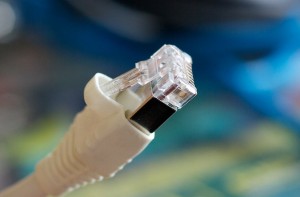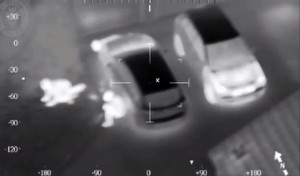 Our world is constantly changing and evolving. Progression is an inevitable force that influences the way we live our daily lives. This is especially true of advancements made in the techy devices we interact with on a daily basis. Everything from our smartphones to our security systems. It’s the manner in how we interact with all of these devices that is driving innovation and product design. The internet and networking of devices is creating a connected environment that offers ultimate convenience and changes how we perceive the potential of security systems.
Our world is constantly changing and evolving. Progression is an inevitable force that influences the way we live our daily lives. This is especially true of advancements made in the techy devices we interact with on a daily basis. Everything from our smartphones to our security systems. It’s the manner in how we interact with all of these devices that is driving innovation and product design. The internet and networking of devices is creating a connected environment that offers ultimate convenience and changes how we perceive the potential of security systems.
At Perfect Connections, Inc. our licensed integrators provide comprehensive security systems to businesses and homes throughout northern and central New Jersey. We believe in installing quality systems that are in line with the best technological advancements the market has to offer. This doesn’t mean we use the trendiest devices for the sake of being “trendy,” it means evaluating current products that will add value and provide a platform for future adaptation. With the Internet of Things (IoT) it’s imperative to implement devices that are not only relevant but can stand the test of time, within reason.
The definition of the IoT can be summed up as, “the interconnection of uniquely identifiable embedded computing devices within the existing internet infrastructure without requiring human-to-human or human-to-computer interaction.” This means devices that are able to “talk” to one another via an internet connection without third part interference. An example would be a motion detector that automatically uploads a video clip to an authorized smartphone when it senses movement. The IoT is influencing changes in security system components like video cameras, access controls, recording equipment, fire and burglar alarms, locks, and monitoring services. The devices themselves are evolving but so is the manner in which end users and system operators interact with them.
A higher level of remote connectivity to security systems and their components is a result of the IoT. End-users can now login to security systems and their devices via an app on their mobile device. This would allow the business owner who is away on vacation to periodically check-in on the day-to-day by logging into their surveillance system on their smartphone. The homeowner who forgot to lock their doors and arm their system can now do so remotely via a mobile device or computer. Automated notifications can be setup to send an alert when an alarm is triggered, someone tries to gain entry without proper access credentials, when a camera or motion detector capture movement within their range; the possibilities are extensive and continue to be developed.
According to Steve Hausman, president of Hausman Technology Keynotes, we are still at the beginning of the “IoT revolution.” Some research suggest by next year there will be over 30 billion wirelessly connected devices in operation. With everything becoming more and more connected one has to wonder, what are the risks? In this highly connected world, there is a plethora of data being recorded, stored, and shared but who has access and rights to this data? Therein lies the problem.
As with anything connected to the internet, the risk of being hacked or stolen is inherent. In the security world this would be a problem for IP cameras, cloud storage and recording solutions, networked access controls, and basically anything running on or connected to an internet network. With that in mind, industry professionals and developers are continuously working on solutions to prevent and minimize vulnerability.
Hausman says, “Security standards need to be established and enforced at the design and manufacturing levels. As the IoT evolves, we can also expect that society will not only adapt to its usefulness but come to expect that appropriate safeguards be implemented to ensure both privacy and security.” Today, those “safeguards” are being provided by licensed security integrators who understand the risks associated with system automation and the IoT. Often times this means strong encryptions for not only the network, but the connected devices as well.
The IoT isn’t something that’s going to disappear. Its presence in the security industry will continue to shape the way manufacturers develop products and how they are implemented by security integrators. As licensed professionals our integrators at Perfect Connections, Inc. provide comprehensive security system solutions to businesses and homes throughout northern and central New Jersey, and have been doing so for over 25 years. Our team has witnessed decades of advancements in the industry. We realize it is our duty to continue our own education as well as offer knowledge to our customers when implementing new technologies and component counterparts.
If you live or run a business in Central or Northern New Jersey and would like information on any of the topics discussed above, please call 800-369-3962 or simply CLICK HERE.
Image Credit: Image by Jonathan Briggs-Flickr-Creative Commons
 Not all surveillance cameras are created equally. It may seem as simple as selecting a surveillance camera and popping it into place, but what about the external factors that affect the quality of recorded images? One of the top concerns for industry professionals and end-users alike is a cameras ability to see in the dark or varied light conditions. Whether you’re using interior or external cameras, their ability to function under varied light conditions is paramount. Our experts at
Not all surveillance cameras are created equally. It may seem as simple as selecting a surveillance camera and popping it into place, but what about the external factors that affect the quality of recorded images? One of the top concerns for industry professionals and end-users alike is a cameras ability to see in the dark or varied light conditions. Whether you’re using interior or external cameras, their ability to function under varied light conditions is paramount. Our experts at  What is it about our homes that make us feel safe? Is it the sound of our kids running up and down the stairs? Is it the personalized décor? Is it the smell? Maybe it’s the locks on our doors and windows or the surrounding neighborhood? Whatever it is, we all want that feeling to last, right? Of course we do. So what are you doing to maintain the safety and security of your home? There are many tips and tricks you can use to safeguard your home, one of the best defenses is a customized comprehensive security system. As a trusted security systems provider for over 25 years, our team at
What is it about our homes that make us feel safe? Is it the sound of our kids running up and down the stairs? Is it the personalized décor? Is it the smell? Maybe it’s the locks on our doors and windows or the surrounding neighborhood? Whatever it is, we all want that feeling to last, right? Of course we do. So what are you doing to maintain the safety and security of your home? There are many tips and tricks you can use to safeguard your home, one of the best defenses is a customized comprehensive security system. As a trusted security systems provider for over 25 years, our team at 
 In an unpredictable world, one thing is certain, we all want to protect what’s ours. Whether you’re a business owner or a homeowner, you want to keep safe that which you’ve worked so hard for. One of the most effective ways to do that is to install a security system. Well, what exactly is a security system and what makes it a complete security system?
In an unpredictable world, one thing is certain, we all want to protect what’s ours. Whether you’re a business owner or a homeowner, you want to keep safe that which you’ve worked so hard for. One of the most effective ways to do that is to install a security system. Well, what exactly is a security system and what makes it a complete security system? 